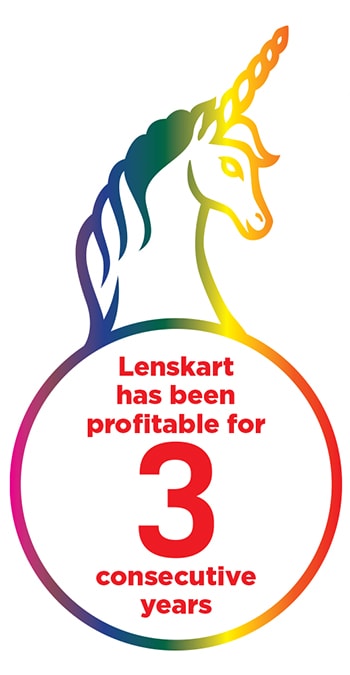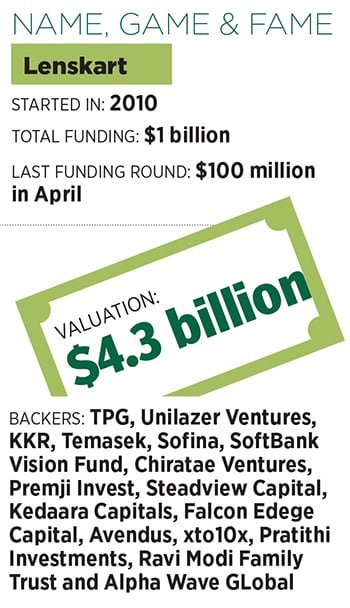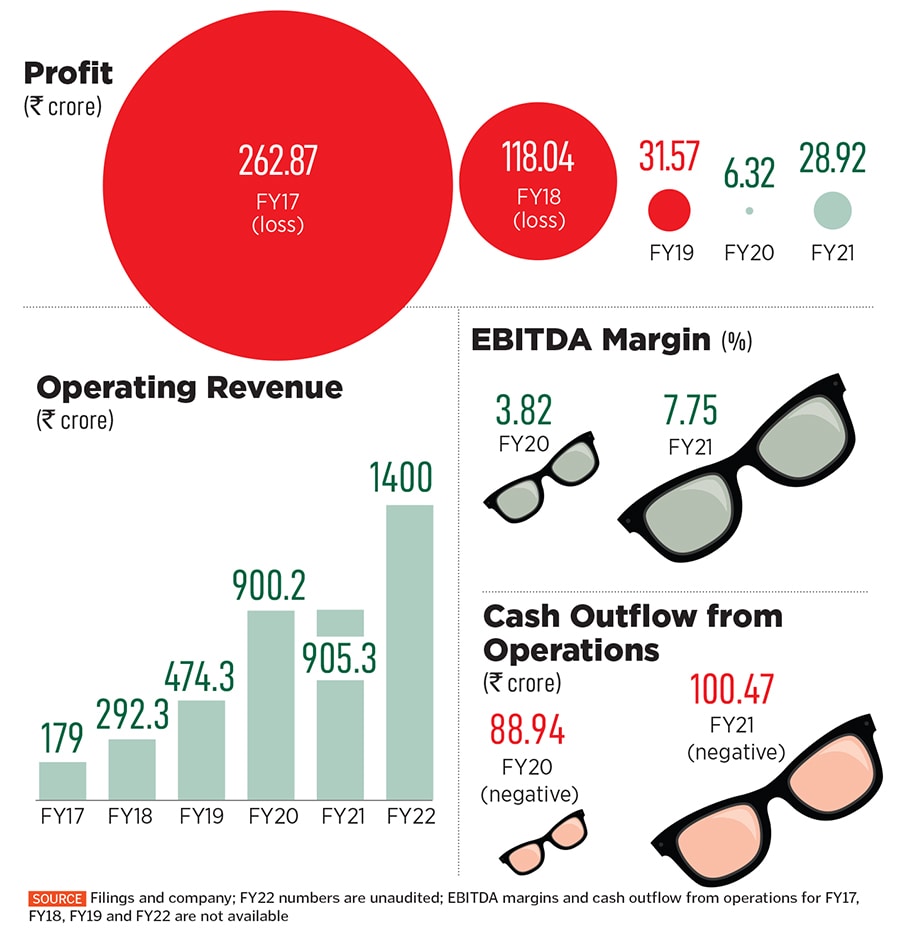
Adjust focus: How Peyush Bansal built Lenskart into a profitable unicorn
Whenever the vision got blurred, Peyush Bansal adjusted his focus. In a decade, he's built Lenskart into India's largest eyewear company and a profitable unicorn
 Peyush Bansal, co-founder and group CEO, Lenskart
Image: Amit Verma
Peyush Bansal, co-founder and group CEO, Lenskart
Image: Amit Verma
Bengaluru, 2011. “Kitna paisa chahiye (how much money do you want)?” was the pointed question. IDG Ventures (now Chiratae Ventures) saw immense value in Valyoo Technologies. Co-founded by Peyush Bansal, Sumeet Kapahi, Amit Chaudhary and Neha Bansal in 2008, the Delhi-based ecommerce firm rolled out Lenskart in November 2010 and started selling contact lenses. Over the next few months, Lenskart gradually dabbled into spectacles and sunglasses, the bootstrapped business gathered steam, and the co-founders who started Flyrr—an online store to sell spectacles, sunglasses and contact lenses in the US in 2009—were now set to get their first VC (venture capital) cheque.
The excitement, understandably, was palpable. After finishing his engineering from McGill University in Canada, Bansal joined Microsoft in the US and worked for close to a year. The truncated stint was the first turning point. “Microsoft was all about ushering in revolution and consumer obsession,” recalls the 38-year-old co-founder and group chief executive of Lenskart, which has raised around $1 billion in funding so far and is valued at $4.3 billion. “Kuch disruptive karna tha (I wanted to do something disruptive),” he adds. The wannabe entrepreneur came back to India in November 2007, invested ₹25 lakh and started SearchMyCampus, an online classified for students scouting for jobs, accommodation and rentals, from the basement of his parents’ house in South Delhi in January 2008.
Over a year later came the first learning. There was not much money to be made. The rookie founder didn’t give up, adjusted his focus and came up with another gig. In June 2009, Flyrr was started, and it took off. By mid-2010, the venture catering to the US market was making around $100,000 a month. The success, though, was shortlived. The suppliers in the US were not customer-centric, didn’t pay heed to user issues, and complaints started piling up. Bansal dashed to America, spent three months in futility, and realised that Flyrr didn’t have any control over operations and delivery. “What if the model could be replicated in India?” he asked. The answer from his team was a resounding yes, and Lenskart was rolled out in November 2010.
 The initial challenge was to sell lenses and glasses online. “Would there be buyers?’ was the big question staring at Bansal, who took two steps to nudge users. First, he rolled out a 14-day ‘no questions asked’ return policy, which was later extended to a year. And the second was to set up a dedicated call centre to address consumer grievances. The gambit worked, the business scaled and it caught the attention of IDG, which had invested in fashion ecommerce venture Myntra in 2008.
The initial challenge was to sell lenses and glasses online. “Would there be buyers?’ was the big question staring at Bansal, who took two steps to nudge users. First, he rolled out a 14-day ‘no questions asked’ return policy, which was later extended to a year. And the second was to set up a dedicated call centre to address consumer grievances. The gambit worked, the business scaled and it caught the attention of IDG, which had invested in fashion ecommerce venture Myntra in 2008.
In Bengaluru, in early 2011, IDG was quick to spot another hidden gem. The compelling proposition to invest in Lenskart was simple. Titan Eye Plus, an eyewear company started by the Tata group in 2007, had scaled operations. Lenskart, IDG argued, could be bigger than its rival because of the online reach. The VCs were ready to cut a cheque. “I think we need ₹1-2 crore,” said Bansal, sharing his estimate of funding requirement. The backers proposed $4 million (around ₹22 crore), the term sheet was offered, and the deal was sealed.




 Bansal was in a fix. Though his heart was with Lenskart, he couldn’t think of scaling down his other ventures. They were growing in topline, most of the backers liked the speedy growth, and any thought of putting an abrupt end would have looked repulsive. Enter Ronnie Screwvala. The media mogul, who started UTV Group in the 90s and sold it to Walt Disney Company in 2012, had invested in Valyoo in December 2012. The mentor now invited Bansal for a breakfast meeting in Mumbai.
Bansal was in a fix. Though his heart was with Lenskart, he couldn’t think of scaling down his other ventures. They were growing in topline, most of the backers liked the speedy growth, and any thought of putting an abrupt end would have looked repulsive. Enter Ronnie Screwvala. The media mogul, who started UTV Group in the 90s and sold it to Walt Disney Company in 2012, had invested in Valyoo in December 2012. The mentor now invited Bansal for a breakfast meeting in Mumbai. 






